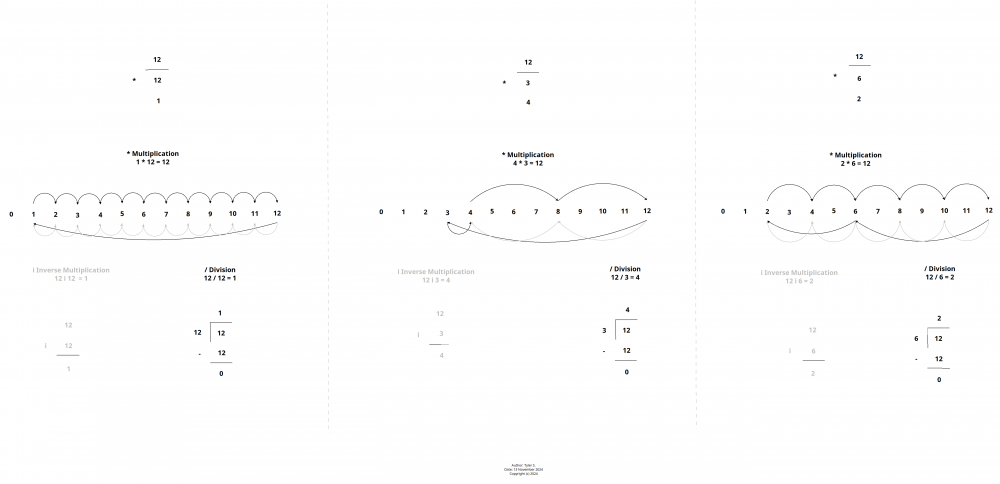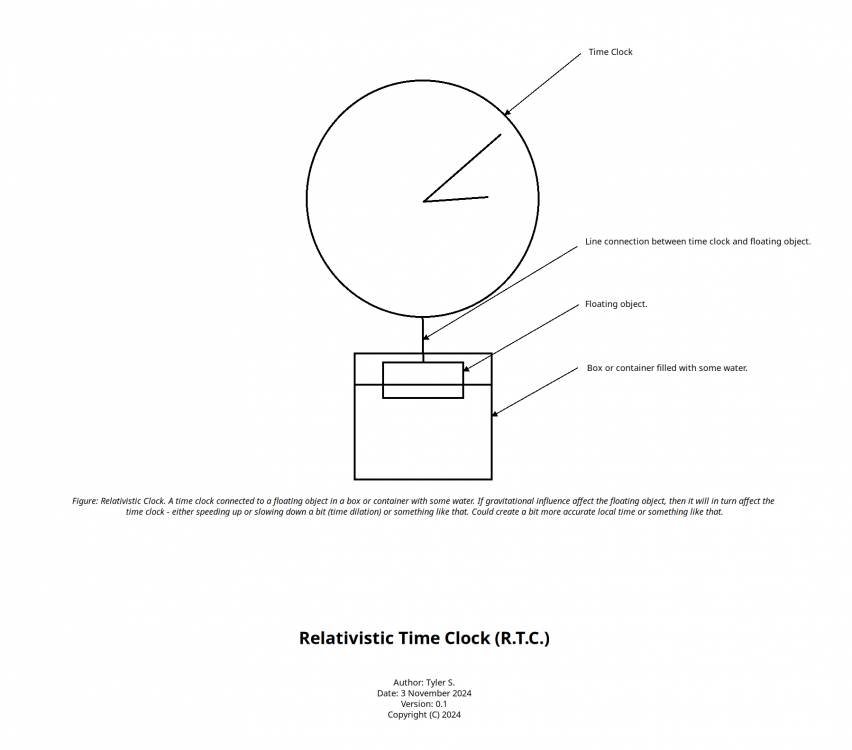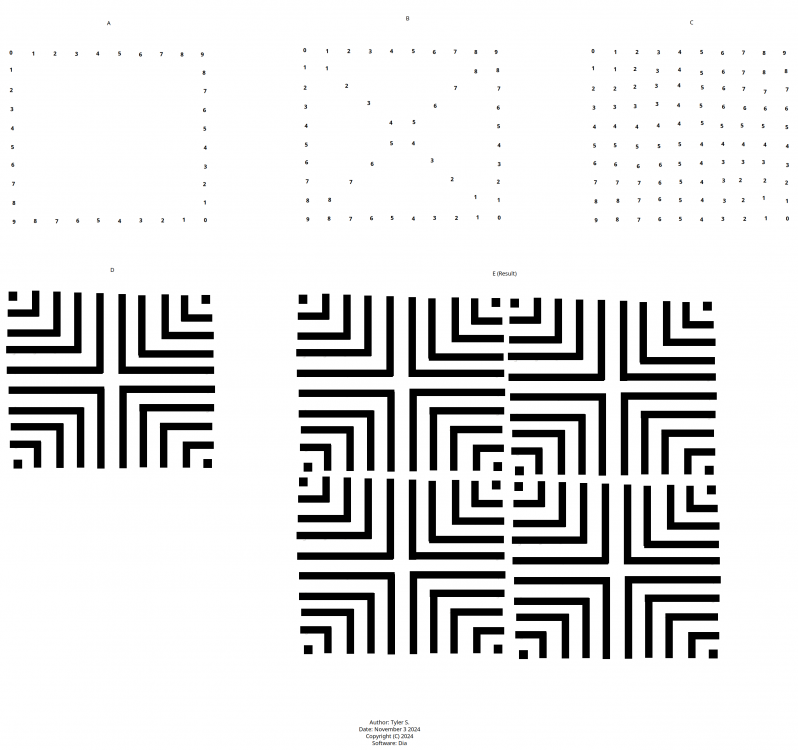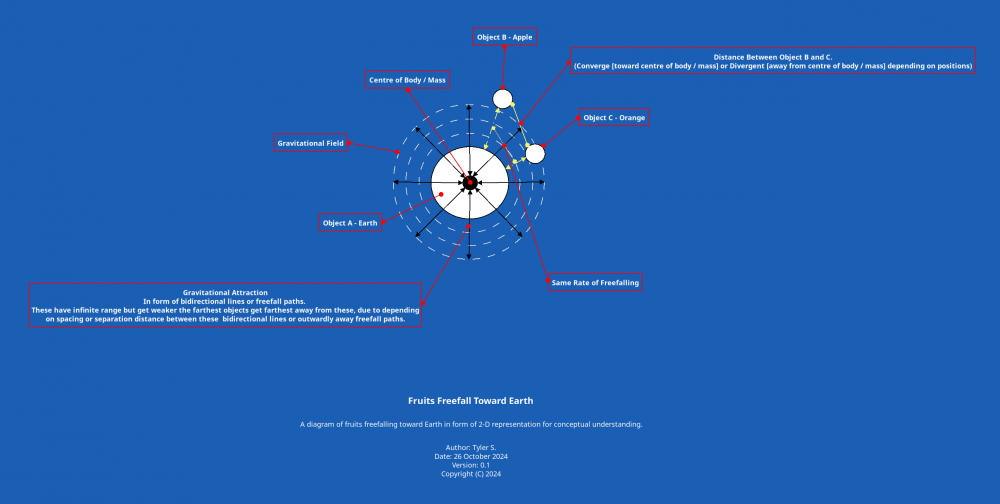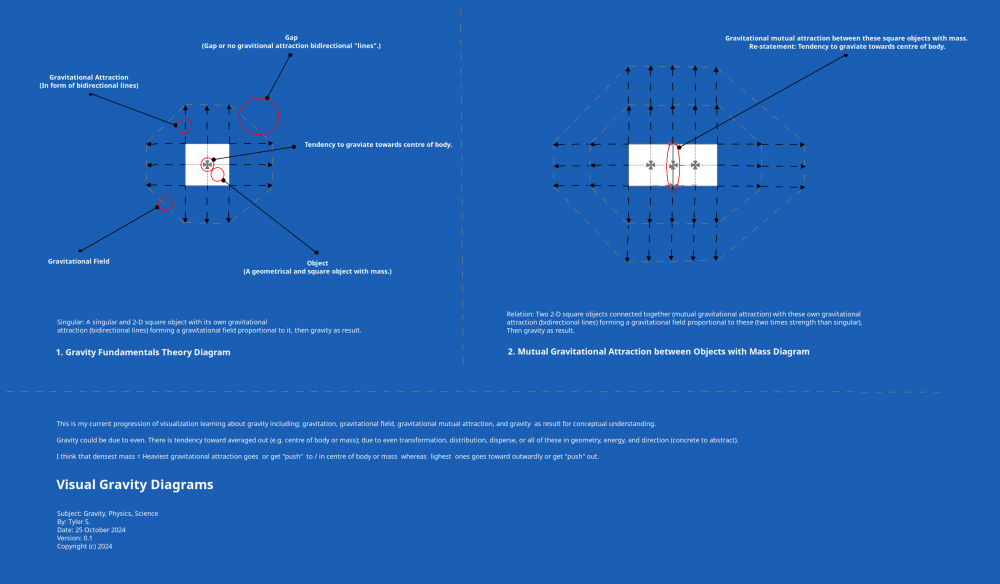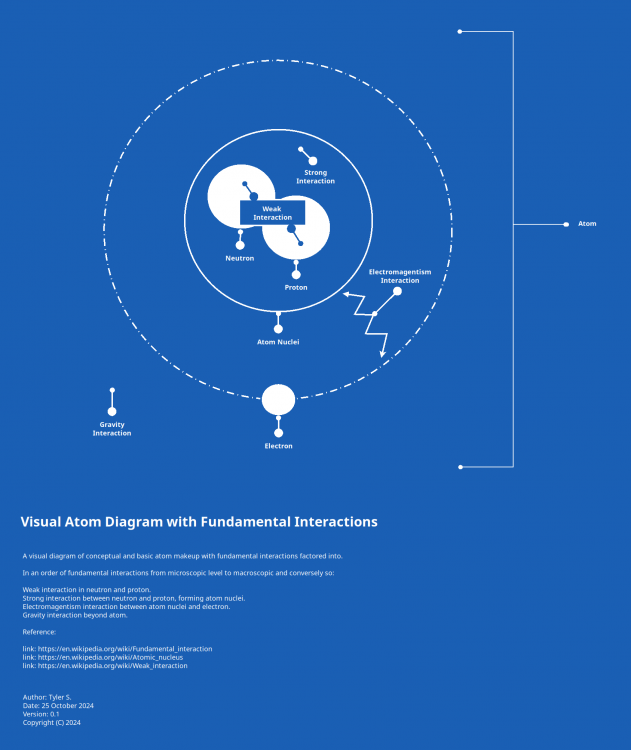-
Posts
150 -
Joined
-
Last visited
Content Type
Profiles
Forums
Events
Everything posted by tylers100
-
I think I'm beginning to understand a bit. I noticed something interesting about the 12 number, see attached image. Linear 12 is a beginning and end. The circle 12 is a bit amusing, a continuous 12 number. Clockwise manner as depicted on the image, but if arrow go in counter-clockwise manner.. same 12 result hence continuous 12 number. Heh, a bit interesting to point out.
-
I looked into Set Theory and Group Theory at previously times but need to read and think a bit more about these at later time. For now, discussing about just the inverse multiplication using the multiplication concept. Diagram Image See the attached diagram image. No Process / Procedure It is starting to look like inverse multiplication is un-doable since I'm unable to find a correct process or procedure for it / that or there is none (or none yet.. ?). I mean, for example: Multiplication 1 * 12 = 12 then Inverse Multiplication 12 i 12 = 1 It is seemingly easy to see one can reverse the multiplication and its answer the other way to obtain answer when inversely multiplying. But.. no process or procedure. Uniform I inverse-multiplied using the same multiplication principle or concept as shown on the image. I should point out that when inversely-multiply (gray numbers / arrows / lines) numbers, these seems uniformly-even when divisions are slightly different despite the fact these divides evenly. Or maybe I'm a bit over-analyzing the basics of arithmetic operations or something like that. It is just that I want to ensure that I get these basics of arithmetic operations right and explore if there is any other major arithmetic operation or not with certainty. Also or maybe I need to step a bit back and look into the Set Theory and Group Theory a bit more to know before proceeding further?
-
Five possibilities occurred with searching for a next science genius: - Be genius. - Wait for a next genius. - Work together to be "genius". - Or genius is overrated, and do what best can do. - And or all of above.
-
I looked up both set theory and group theory wiki, bookmarked these for later reading. No, I'm not ready for that at this moment. It is just that while refreshing myself with math at basic level for some time, I noticed there must be a "counterpart" for every mathematical operation even at arithmetic level, maybe.. an example: + and -, addition and subtraction * and i, multiplication and inverse of multiplication (I called it as I do not have a formal termed word for it as far I do not know one except similar words referenced.) / and \, division and its counterpart Division and its counterpart (when I did the inverse multiplication math I realized a counterpart of division might would has inverse of multiplication and addition along with rounding up or down decimals, I called it something like, "jointion" and or denoted with a symbol like '\' while division is '/'. It would joins numbers and round up/down numbers whereas division divides to decimals if necessary. But some math I did with it didn't checked out as I encountered some errors and confusions with it.. so perhaps I still need some work with understanding my approach and conceptualizing process or something like that.)
-
* = multiplication i = inverse (of) multiplication 2 * 2 = 4 4 i 2 = 2 The reason I post this is because I don't see it appearing as part of arithmetic operations elsewhere apart from some references to inverse (e.g. link: https://en.wikipedia.org/wiki/Multiplicative_inverse) but probably not exactly what I am talking about.
-
I was looking at my own ordinary time clock. I had a notion about relativity while still (and still am) learning about it then came up with this thread, to see if a R.T.C. make sense or is possible or not. Well, possibly about precise as averaged out. With my assumption that most ordinary local time clocks (and others?) are mechanically constant, lacking a natural connectivity with dominant gravity of local ranging to global.
-
I was looking at a time clock, then I have had a thought about what if were to add a box or container with some water and floating object underneath it. The line connection between the floating object and the time clock. If gravitational influence affect the floating object at some levels, the floating object would tug or pull the tick pointer to move either speed up or slow down depending, yielding a possible and more accurate local time? The reasoning I follow is if more accurate local time, then less the need to adjust local time multiple of times or something like that. Or is my reasoning wrong or need a bit more learning about GR or SR or both? I have attached an image diagram illustrating what I am talking about.
-
I have heard of Penrose but not his work on tiling. Escher, no until I visited the link. Tessellation, yes but not explored or delved into it in depth not fully yet (formal-wise). Good morning to you too.
-
A basic number arrangement and draw, a random and kinda trivial but a bit fun activity I did this morning. See attached image.
-
The temperature here at 1 c last time I checked. I don't mind some coldness of weather.. just not extremely cold. Speaking of temperature.. I once played around with developing a diagram of temperature, not a serious thing but wondered why a standardization of human specific temperature couldn't be based on from this (perhaps not too precise or something like that): 0 (absolute absence of heat) 1 (cold) 2 (warm) 3 (hot) Then developed into Wizard Temperature Formulation (W.T.F.), a human specified temperature, then polished just on this post: 0 ultra cold 0.5 1 extremely cold 1.5 2 moderately cold 2.5 3 low cold 3.5 4 low heat 4.5 5 moderately heat 5.5 6 extremely heat 6.5 7 ultra hot Oh well, just for fun.
-
At the time of authoring this, I'm kinda taking a break from learning a bit about physics and diagramming (one of my modes of learning; visualization). I ate a lasagna for breakfast, heh.. maybe a bit unorthodox, but omg it tasted delicious. The weather is becoming a bit more colder lately as kinda expected at this time of season, nearing winter time... "Winter is coming."
-
An update (see attached image). I'm in some degrees of aware that it might be approximately close to right, wrong, or both. I think this is for time being, at least for me. Thanks to you and other posters for participation in this thread so far. Seems more further physics and mathematics would be a step in understanding gravity and etc more better.
-
Ok, thanks. I'll look into and think about it a bit more in order to learn a bit if it make sense.
-
Thanks for the link.
-
Fruits Freefall Toward Earth - Diagram See attached image. I think I kinda understand what you are saying about freefall paths, but have questions below. Same or Different? What I define to be gravitational attraction to be bidirectional lines.. are these similar or same as freefall paths or different? I said this because both seem comparable same. Additionally, I said bidirectional lines (having two arrows at ends of each line) because on gravity wiki said have infinite range but get weaker as objects get farthest away. I assume that is due to the distance of separation between these bidirectional lines (or freefall paths?) if geometrical shape or form is radial in nature? Edited - Another question: I forgot to factor into gravitational acceleration, assumed to be by-product of static gravity in motion? Reference "Gravity has an infinite range, although its effects become weaker as objects get farther away." From link: https://en.wikipedia.org/wiki/Gravity
-
Honestly, I'm not sure. I'm just learning about the basics of gravity in visual way, a visual approach to physics specially gravity, and to pass time. I'm aware that learning math in order to understand gravity equations would greatly help, but.. math is not my strongest suit. Hence the layman and visual approach as starting point of approach the gravity in physics, science.
-
Parallel to Geometrical Shape or Form with Mass On the visual gravity diagram, gravitational attraction in form of bidirectional "lines" are parallel to geometrical shape or form of object with mass. The gapness on it, is absence of these bidirectional lines but gravitational field is still present - as shown. Can still has a tendency to gravitate toward within that gapness area while in its gravitational field, just less strength or effects especially without these gravitational attraction bidirectional lines defined by geometry. Radial on 2-D Circle Shape Gravity points radially while within 2-D for conceptual understanding, would be on 2-D circle as defined by its geometrical shape.
-
A visual gravity diagram I developed, see attached. Just the gravity aspect. Let me know if my understanding of the gravity layman definition is correct or also wrong.
-
Ah, I see.
-
See an attached image I developed in order to attempt understand what you said, is it approximately correct or not?:
-
I'm not sure, off top of my head is recharging Mars' core kind of like recharging a vehicle's dead battery but maybe that is a bit too simple and naive.. ?
-
Kinda interesting. Natural transition scenario: If build habitable underground zones then maybe inevitably Mars might will have a magnetic field if possible then can move toward habitable surface in future, see: "The seismic measurements from the InSight lander revealed that the Martian outer core is in a liquid state and larger than expected.[19] In one model, a partially crystallized Martian core explains the current state of Mars (i.e., lack of magnetic field despite liquid outer core), and this model predicts that the magnetic field has the potential to be reactivated in the future." from link: https://en.wikipedia.org/wiki/Magnetic_field_of_Mars#Dynamo_mechanisms
-
Ok, I changed my mind: I'll probably look into info about Newton gravity, general relativity, and quantum theory a bit more - and a bit of mathematics related to these if possible too. Sorry about my bit drama manner.
-
A. You say pictures and words are interpreted differently by different people, meaning some might understand my words & pictures whereas some might not due to not on universal level - perhaps. B. Then you proceed to say my pictures aren't conveying the information I intend, then called it gibberish, then drawing non-nonsensical solutions from them. ...? A contradiction between both A and B. The B is like you absolutely decided my pictures are absolutely not understood by all people. Get it? Anyway, I understand what you meant; I should stfu and move on to learning math and talk math mechanically or else get gtfo of this science forums as it apparently talks math only. /exits



